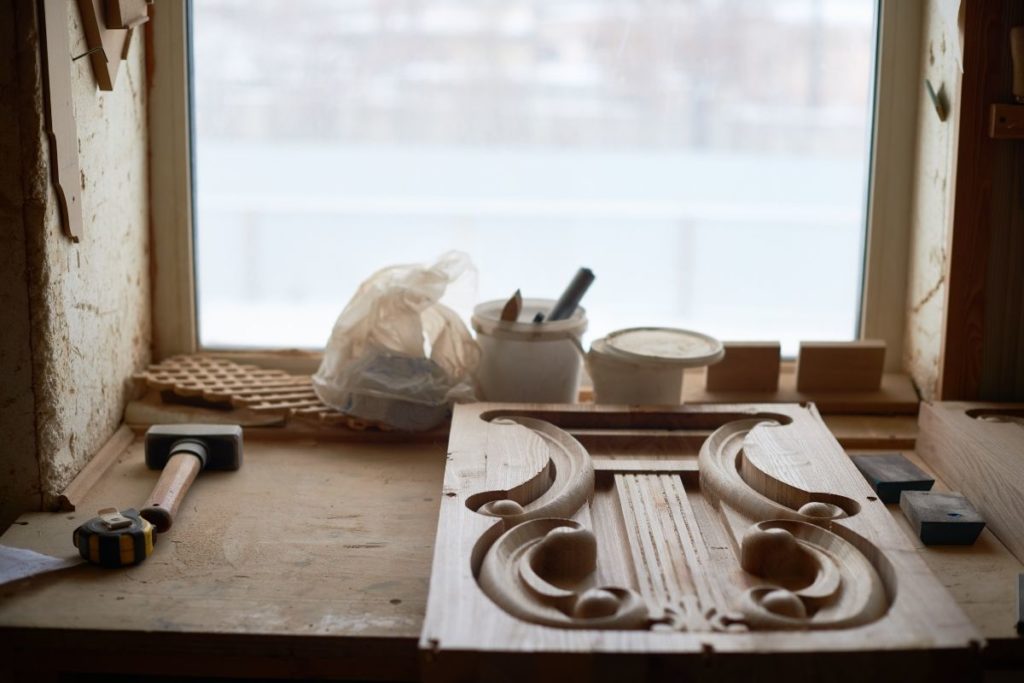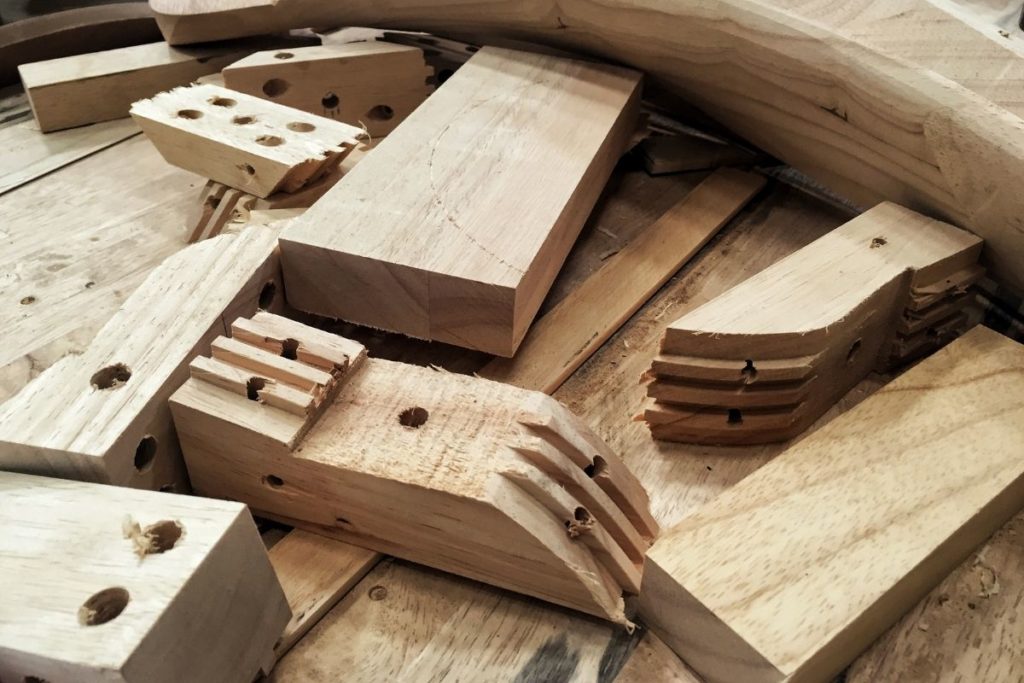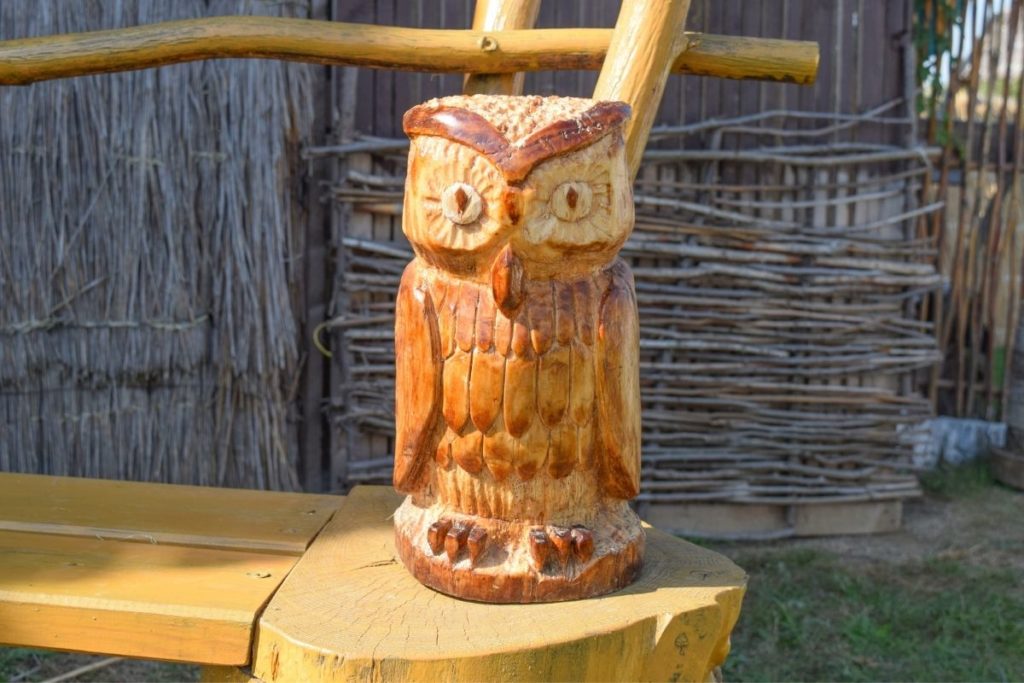
This guide about the best Woodworking Books covers different skills such as sawing, sanding, joint-making and whittling, for all levels and ages.
In this era of work automatization, manual labor’s importance is fading. The other side of comfier work culture is losing touch with the material dimension of life.
Woodworking, a previously quite common craft skill, is getting rarer and thus higher prized, but, in fact, its basic techniques are not that difficult to learn.
Money is just one of the advantages learning woodworking skills will bring to your life, along with boosting confidence in the power of your own hands and unlocking a creative side you didn’t know you had.
Wood is a very special material: unlike stone or metal, it used to be part of a living being, a gift from Nature you can repay by making it into something useful, or simply beautiful.
This is a list of the best books to learn woodworking we found, with some general ones, two on wood joints, and three focusing on the creative side.
Disclosure: Some of our articles contain affiliate links (as an Amazon affiliate I earn from qualifying purchases).
General Woodworking Knowledge

The Complete Manual of Woodworking: A Detailed Guide to Design, Techniques, and Tools for the Beginner and Expert
by Jackson and Day, 1996
Prices pulled from the Amazon Product Advertising API on:
Product prices and availability are accurate as of the date/time indicated and are subject to change. Any price and availability information displayed on [relevant Amazon Site(s), as applicable] at the time of purchase will apply to the purchase of this product.
This classic book aims at giving an insight into the most possible implications of woodworking.
Its almost 2000 pictures are the ones that will guide you through this new world.
It has an encyclopedic attire and starts by listing different types of wood to then proceed with tools, techniques, and so on.
Please note this book has quite an age already, so some of the tools listed may not be widely available.
The Complete Book of Woodworking: Step-by-Step Guide to Essential Woodworking Skills, Techniques, Tools and Tips
by Tom Carpenter
Prices pulled from the Amazon Product Advertising API on:
Product prices and availability are accurate as of the date/time indicated and are subject to change. Any price and availability information displayed on [relevant Amazon Site(s), as applicable] at the time of purchase will apply to the purchase of this product.
This is is one of the best woodworking books for general knowledge on the subject, featuring authorship by the prolific writer Tom Carpenter.
Apart from fundamentals of woodworking techniques, materials and safety, it includes 41 actual projects.
The illustrations this 450 pages book is filled with are all very detailed and presented in an exploded view, so that you will be able to get an idea of the project from different perspectives.
Build Stuff with Wood: Make Awesome Projects with Basic Tools
by Asa Christiana, 2017
Prices pulled from the Amazon Product Advertising API on:
Product prices and availability are accurate as of the date/time indicated and are subject to change. Any price and availability information displayed on [relevant Amazon Site(s), as applicable] at the time of purchase will apply to the purchase of this product.
Many woodworking books (including the two we just mentioned) require a spacey workshop and quite an array of tools, which can be pricey.
This book from Asa Christiana, instead, will show you what you can do with limited space and basic equipment.
For a very reasonable price, the author will guide you through 14 beautifully pictured projects. You may think they are a lot, but after completing them, you will ask for more!
The Kids’ Building Workshop: 15 Woodworking Projects for Kids and Parents to Build Together
by Robertson, 2014
Prices pulled from the Amazon Product Advertising API on:
Product prices and availability are accurate as of the date/time indicated and are subject to change. Any price and availability information displayed on [relevant Amazon Site(s), as applicable] at the time of purchase will apply to the purchase of this product.
This is our choice among the best woodworking books which are children-oriented. It really can create a bond between kids and adults and build something tangible out of it.
This project-oriented book starts from basics: nail driving, hole drilling, measuring but you will be amazed to see all this scattered knowledge merge into actually useful objects: among others, a lemonade stand, a birdhouse, and different types of game boards.
About the noble art of Wood Joints

The Joint Book: The Complete Guide to Wood Joinery
by Terrie Noll, 2009
Prices pulled from the Amazon Product Advertising API on:
Product prices and availability are accurate as of the date/time indicated and are subject to change. Any price and availability information displayed on [relevant Amazon Site(s), as applicable] at the time of purchase will apply to the purchase of this product.
This spiral-bound book will be your number 1 source for knowledge about wood joinery and its utilizations.
Pricewise it’s very reasonable and it includes tutorials to build at least 70 different types of wood joints and their many variations.
Leafing through its pages, you can really get in touch with the author’s 20 years of experience as a furniture designer and maker and imagine unprecedented applications for his tricks.
The Complete Japanese Joinery
by Sato, Nakahara, Nii, 1995
Prices pulled from the Amazon Product Advertising API on:
Product prices and availability are accurate as of the date/time indicated and are subject to change. Any price and availability information displayed on [relevant Amazon Site(s), as applicable] at the time of purchase will apply to the purchase of this product.
East Asian woodworking differs from the Western one on a very deep level but is sure not less remarkable.
A huge number of eastern architecture wonders are huge wooden structures, often assembled without the use of nails or glue, and this book will shed a light on how is that possible.
It has a very Japanese touch, with a high emphasis on the beauty of wood and the respect of tools.
Artsy Corner

20-Minute Whittling Projects: Fun Things to Carve from Wood (Fox Chapel Publishing) Step-by-Step Instructions & Photos to Whittle Expressive Figures
by Tom Hindes, 2016
Prices pulled from the Amazon Product Advertising API on:
Product prices and availability are accurate as of the date/time indicated and are subject to change. Any price and availability information displayed on [relevant Amazon Site(s), as applicable] at the time of purchase will apply to the purchase of this product.
We can’t avoid mentioning this among the best woodworking books to learn whittling from scratch.
Some of the projects are meant to be completed in just 20 minutes (!) and will make perfect gifts for loved ones.
Tom Hindes will teach you all the basic cuts you need, to then show how to carve and finish dogs, gargoyles, ornaments, etc. out of a simple piece of wood. Its detailed instructions make it perfect for beginners.
Complete Starter Guide to Whittling: 24 Easy Projects You Can Make in a Weekend
by Editors of Woodcarving Illustrated, 2014
Prices pulled from the Amazon Product Advertising API on:
Product prices and availability are accurate as of the date/time indicated and are subject to change. Any price and availability information displayed on [relevant Amazon Site(s), as applicable] at the time of purchase will apply to the purchase of this product.
Some of the 24 projects you can find in this book are more on the complex side but don’t worry, the learning curve is not steep at all!
Its 96 pages are packed with spot-on information and clear images.
You will impress your friends with seemingly very complex works like chains and the classic ball-in-a-cage. A total of 24 expert woodcarvers contributed to this work and it shows!
Intarsia Woodworking for Beginners: Skill-Building Lessons for Creating Beautiful Wood Mosaics
by Kathy Wise, 2010
Prices pulled from the Amazon Product Advertising API on:
Product prices and availability are accurate as of the date/time indicated and are subject to change. Any price and availability information displayed on [relevant Amazon Site(s), as applicable] at the time of purchase will apply to the purchase of this product.
Kathy Wise is an institution in the wood sculpting community. In this book, she will share with you the secrets of intarsia.
Every lesson and project is broken down into smaller, easier to assimilate steps.
The difficulty level of the book is progressive: it starts from the basics of wood and utensils choice to actual carving and then, after the project is finished, make way to more advanced skills that will add shade and grain to your showpieces.










